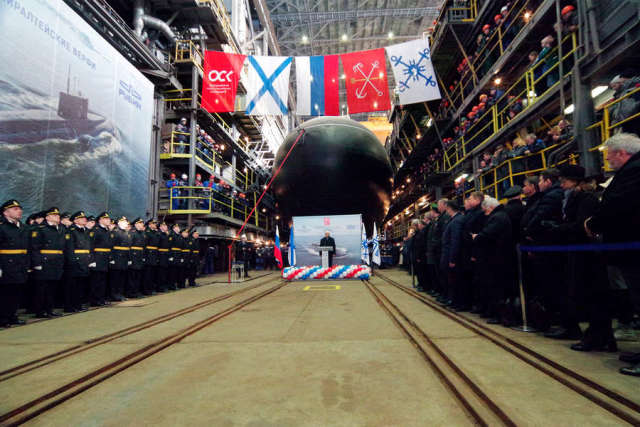Why the Russian Navy relies on diesel submarines of the Varshavyanka project
Admiralty Shipyards launched a diesel-electric submarine (DPL) of project 636.3 "Varshavyanka", which was named "Ufa". As part of the project, this submarine will become the fourth in the Pacific Fleet and the tenth in the entire Russian Navy. "Newspaper.Ru" understood the peculiarities of "Varshavianok".
A diesel-electric submarine "Ufa" of project 636.3 "Varshavyanka" was launched in St. Petersburg. The Admiralty Shipyards enterprise, which is part of the United Shipbuilding Corporation (USC), is building two more submarines of the series for the Pacific Fleet - Mozhaysk and Yakutsk.
Earlier, the commander-in-chief of the Russian Navy, Nikolai Ermolov, said that the submarines intended for the Pacific Fleet will be built taking into account the specifics of operation in the Far East, and also recalled that the Varshavyanka have already "proved their effectiveness in actions against terrorists in Syria."
Varshavyanka is an upgraded version of the project of diesel-electric submarines of Project 877 "Halibut", developed in the USSR in the late 1970s. According to the USC website, these submarines "combine acoustic stealth and target detection range, they are equipped with the latest navigation and control systems." The peculiarity of these submarines is a new inertial navigation system. "It is distinguished by the duration of storing parameters without correction, which ensures the issuance of information to the missile system in an underwater position. This ensures increased secrecy in the process of performing combat missions," the USC website says.
Alexey Kupriyanov, an expert of the Russian Council on International Affairs (RIAC), noted the export opportunities of Varshavianok. "The main advantages of these submarines are that they are low-noise - for this they were nicknamed the "black hole" in NATO. They are well suited for service in warm seas, tropical waters. The export potential of Varshavyanka for the countries of Southeast Asia is quite high," the expert noted.
According to retired Rear Admiral Mikhail Sologub, it was the successful operation of the project submarines in other countries that became the reason to draw the attention of the leadership of the Russian Navy to them.
"Project 636.3 submarines have been appearing in the Russian Navy since 2014, the first was the B-261 Novorossiysk submarine. By the end of 2016, the 4th separate submarine brigade of the Black Sea Fleet included 6 submarines of this project. Starting in 2019, the Varshavyanki enter the Pacific Fleet," he said in an interview with a correspondent of Gazeta.En" Rear Admiral Sologub.
The updated Varshavyanka belong to the third generation of diesel-electric submarines, have a displacement of 3.95 thousand tons, the speed of the underwater course is 20 nautical knots, the depth of immersion is 240 meters (300 is the maximum). They are armed with 533-mm torpedoes (six vehicles with a recharge rate of 15 seconds), mines, and the Kalibr-PL strike missile system.
"The appearance of the Varshavians on the Black Sea has radically changed the disposition of forces in the region, including in the Mediterranean Sea," he told the newspaper.En" Admiral Vladimir Komoyedov, former commander of the Black Sea Fleet. - We must admit that
after 1991, the forces of the Russian fleet began to yield to our main competitor on the Black Sea - Turkey, including submarines. NATO ships had to be resisted by surface ships, which also required modernization and rearmament. The appearance of the "Varshavians" in the Black Sea was a shock for NATO."
In turn, the ex-commander of the submarine B-28, captain of the 1st rank of the reserve Alexander Pushkarsky in an interview with the correspondent of "Gazeta.Ru" noted the special role of "Varshavianok" in the issue of monitoring aircraft carriers.
"They occupy a special place in the submarine fleet and, despite their smaller size compared to submarines, they play a huge role in conducting various kinds of operations.
- told Pushkarsky.
Victor Sokirko

